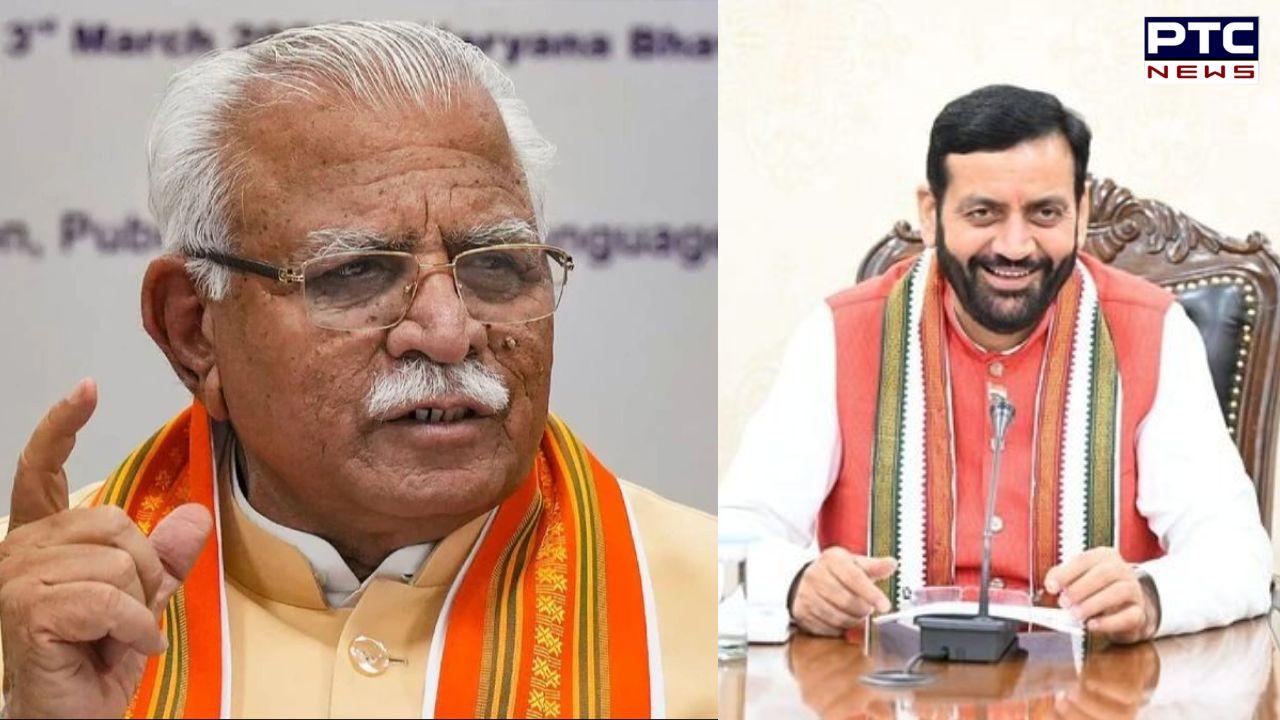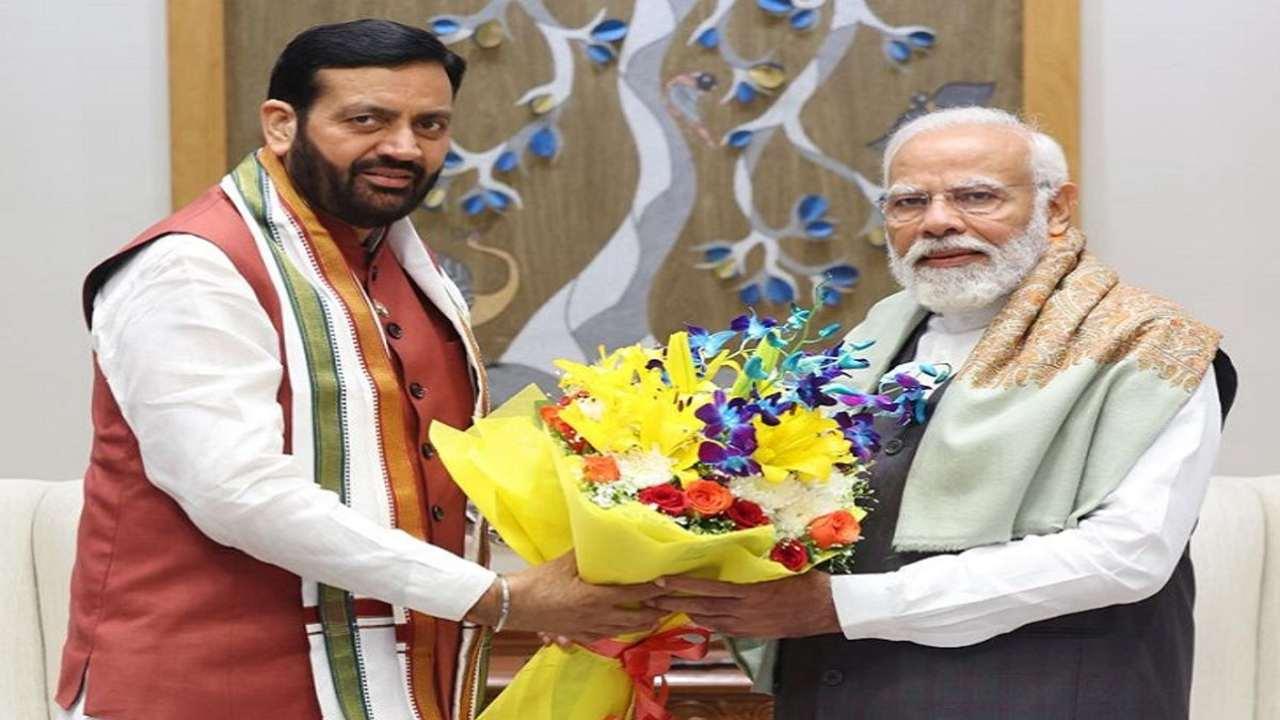

Haryana Elections 2024: Five major factors behind BJP's historic victory and hat-trick
Haryana Elections 2024: In the lead-up to the 2024 Assembly elections in Haryana, the Bharatiya Janata Party (BJP) implemented a strategic overhaul, introducing 60 new candidates in an effort to rejuvenate its electoral prospects. This bold move paid off, with 34 of these candidates emerging victorious, resulting in a success rate of approximately 57%.
The BJP's strategy extended beyond just candidate selection; it included a significant shift in leadership, with Nayan Singh Saini replacing long-serving Chief Minister Manohar Lal Khattar just months before the elections, aiming to win over Haryana’s OBC voters amidst growing anti-incumbency sentiments. This approach, combined with a targeted campaign strategy focusing on non-Jat voters and a significant number of rallies, allowed the BJP to secure a strong foothold in a competitive political landscape, further highlighting the decline of the Jannayak Janata Party (JJP) and the challenges faced by the Congress party in mobilising support.

Here are the key factors that contributed to the BJP's victory in the 2024 Haryana elections:
60 new faces given opportunity, 34 won
Before the 2024 elections, the BJP introduced 60 new candidates across 90 seats. Out of these, 34 candidates emerged victorious. This means the party won about 56% of the seats it contested, while the success rate for the newly nominated candidates stood at around 57%. This strategy of changing candidates proved effective for the BJP.
Successful Bet on Changing CM
Manohar Lal Khattar, who has a background in RSS and hails from the Punjabi community, served as Haryana's Chief Minister for nearly 9.5 years. Six months before the elections, in March 2024, Nayan Singh Saini was appointed as the new Chief Minister. This move aimed to appeal to Haryana's approximately 44% OBC population. Furthermore, surveys indicated an anti-incumbency wave against Khattar due to issues related to the farmer protests and the controversy involving female wrestlers. Notably, Khattar was largely absent from the campaign trail, with most campaign posters lacking his image. Prime Minister Narendra Modi held four rallies in Haryana, with Khattar present at only one of them.
BJP's Jat vs Non-Jat formula proves successful for 3rd time
Haryana is home to 36 communities, with the Jats constituting the largest group at 27%. The BJP adopted a non-Jat political strategy, traditionally seen as a party for the upper castes, focusing on securing the votes of Brahmins, Punjabis, Baniyas, and Rajputs. Additionally, the party aimed to strengthen its appeal among the backward and Dalit voter bases. This formula has proven effective once again, following its success in the 2014 and 2019 elections.
A clear example of this strategy's impact can be seen in the scheduled caste (SC) population, which accounts for approximately 20% of Haryana's demographic and has 17 reserved seats.
JJP's support base declines, benefiting BJP
In the 2019 elections, the Jannayak Janata Party (JJP) secured 10 seats, with victories in the Bagad, Bangar, and GT Road belts. However, in the 2024 elections, the JJP faced a complete rout, as BJP and Congress gained significant ground in all 10 of its former seats. The BJP managed to capture 4 seats, with 2 each from the Bangar and Bagad belts, while Congress won 6 seats, including 3 in the Bagad belt, 2 in the Bangar belt, and 1 in the GT Road belt.
After the 2019 elections, the BJP and JJP formed an alliance, leading to JJP's Dushyant Chautala becoming the Deputy Chief Minister. However, in March 2024, JJP decided to break the alliance and contest the elections independently. The benefits of the 2019 alliance shifted to the BJP in 2024, resulting in a significant loss for the JJP.
BJP's 150 rallies outnumber Congress' 70 campaign events
In Haryana, the Bharatiya Janata Party (BJP) conducted approximately 150 rallies, significantly outpacing the Congress party's 70 campaign events. Among these rallies, Prime Minister Narendra Modi held 4, and Home Minister Amit Shah conducted 10, with Modi covering around 20 key constituencies, securing victories in 10 of them. Uttar Pradesh Chief Minister Yogi Adityanath also participated in more than five rallies, alongside over 40 central ministers and MPs who rallied support for the BJP.
In contrast, Congress managed only 70 gatherings, including 4 rallies and 2 roadshows led by opposition leader Rahul Gandhi. Priyanka Gandhi conducted 2 rallies and participated in one roadshow with Rahul. Congress National President Mallikarjun Kharge also held 2 rallies. The disparity in campaign efforts between BJP and Congress—150 rallies to 70—played a crucial role in shaping the electoral landscape in this election.
- PTC NEWS
